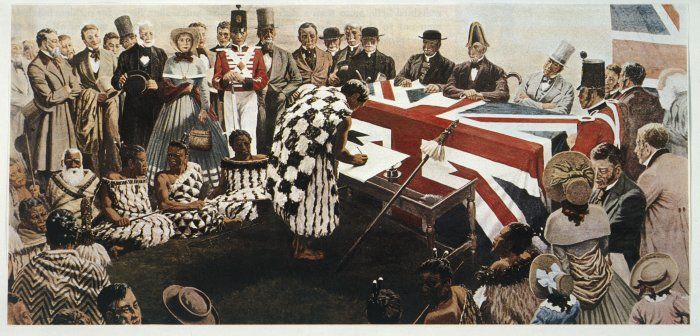Much has been achieved since the renaissance of the Treaty of Waitangi began in 1975. That should be celebrated.
The Treaty – as represented by the original versions of 1840 and all the efforts to modernise its meaning since – describes the relationship between Maori, as the indigenous ethnic group, and all other New Zealanders (again taken as a group). It’s a bilateral relationship that is strong, much stronger than it was before 1975.
As we all know, the Treaty of 1840 made undertakings to Maori. These were broken in many ways, with catastrophic effects we as a society are still grappling with today. The significant achievements since the reconciliation and restoration process began in 1975 are:
1. Recognition of the importance of the unique and permanent rights of Maori in New Zealand society.
2. Acknowledgment that colonisation and Pakeha Treaty breaches decimated Maori society with ongoing intergenerational effects still playing out.
3. Establishment of unique rights for Maori over much of the natural estate and over Maori cultural treasures.
4. Granting of negotiated compensation to Maori for breaches.
5. A commitment to protect the unique bicultural character of Aotearoa New Zealand.
Justice and reparations have been a long time coming and, as generous as they might look to non-Maori, they’re just cents in the dollar for what Maori lost in terms of property. But these settlements were reached after a process of good faith negotiation, albeit having required a fair amount of pragmatism and making-it-up-as-we-go. This is demonstrated by the way our politicians and Maori negotiators have both compromised. However, the reparations are just the start of the journey to restore Maori pride and self-esteem – there is much more that needs to be done.
The reason the post-1975 Treaty process has been successful is that the Treaty is now taken to mean whatever Maori leaders and the Crown, as the public’s representatives, agree it means. On the face of it this “fluidity” may seem to be a weakness, but actually to date it has served the process well. So rather than applying the strict wording of either of the two original versions of the Treaty (te reo and English), in the Waitangi Tribunal Act the tribunal is charged with determining “the meaning and effect of the Treaty as embodied in the two texts”. Not in one version or in the other, but both.
This is a really important point, as the te reo and English versions do not say the same things and in some instances are contradictory. Where this is the case, the original documents aren’t very useful. This reality has forced those in negotiations to attempt to replicate what a reasonable person’s interpretation of what the parties meant all that time ago.
These are known as the “Treaty principles”. In other words the contemporary Treaty is a mix of the te reo and English versions, plus a pragmatic interpretation of what each party meant when they signed – notwithstanding it is very difficult to decipher exactly what was intended 175 years ago.
In fact the current Treaty process goes even further. It also incorporates what today’s parties agree the original signatories would have meant if they were signing up today. Complicated enough? Absolutely, but this confirms the Treaty is a timeless arrangement, to be continually reinterpreted as the relationship between Maori and other New Zealanders evolves.
However despite this fluidity, the Treaty has limits. Even in its modern “elastic” form it cannot be credibly stretched to legitimise all Maori aspirations.
I believe rangatiratanga can and must be addressed, but not through convoluted legal arguments over sovereignty
Take the recent discussion over whether Ngapuhi and other northern iwi ceded sovereignty when they signed the Treaty.
Because the chiefs’ signatures were on the te reo version, it’s certainly possible they didn’t cede sovereignty then, as the most recent tribunal finding concluded. Yet the Crown certainly has sovereignty now, and pragmatically the prospect of giving that up is minimal.
So this leaves us with the most important question of today: “How do we help Maoridom realise the all-important aspirations encompassed in rangatiratanga (used in Article 2, te reo version) in modern day Aotearoa New Zealand?”
I believe rangatiratanga can and must be addressed, but not through convoluted legal arguments over sovereignty, as currently pursued by the Waitangi Tribunal and iwi leaders.
In my view, this path will result in greater division between Maori and other New Zealanders.
This week I will explore how we need to back up, and plot a different course.
The series
Today:
• Achievements of the Treaty process
To come:
• Limits of the Treaty process
• Better ways to deliver rangatiratanga for Maori
• One country, two peoples – practical policies.

